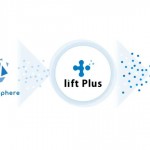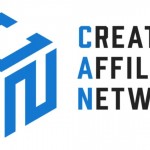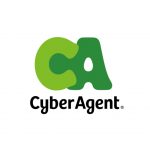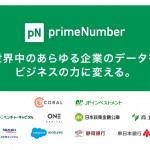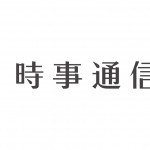自動取引は「保証」が鍵になる ーisocket CEOインタビュー
With $8 million in new venture funding in his company’s pocket, one might think that the next step for publisher ad tech and marketplace firm isocket is to hire legions of sales and marketing folks. Not so, says isocket CEO John Ramey. It’s more about the technology challenge as he told AdExchanger: “We’re trying to affect change where 75% of the money. There are many legacy, antiquated processes.”
His lean, 15-person firm based in Burlingame, California is half engineers today. He admits sales, marketing and engineering will grow – so, too, will the addition of designers. Ramey say, “It’s not about robots putting people out of jobs but the ability to have well-built, well-designed, ‘magical’ products. There’s too little of it in ad tech. You need engineers and designers and product people to make it all happen.”
AdExchanger spoke with isocket CEO John Ramey and CRO Ben Trenda last week about the company’s direction, Class 1 (guaranteed) and Class 2 (remnant) display ad inventory, and industry trends…
AdExchanger: Looking ahead, how much of what isocket is going to do will have to do with programmatic media? More than half?
JOHN RAMEY: If we talk about “programmatic” meaning multiple pieces of software are working together to get something done, then yes, I think the majority is going to be programmatic in the sense that an advertiser’s media-planning tool or DSP is going to talk to isocket’s catalog, which is going to talk to a publisher’s DMP, which is going to talk to a credit card processor, which is going to talk to a creative management service. All of these things that used to be done through email and are now being done through technology and “pipes.”
What we see happening over the next few years is an infrastructure being created for Class 1 inventory that already has been or is being created in Class 2. There will be piping and infrastructure laid down in this no man’s land of technology in Class 1 for the next few years and that is where the majority of our business is going to be.
Of course, on the self-service side of what we do, that was our public persona before we launched our programmatic product.
isocket’s BuyAds.com is built very specifically for self-serve buyers. It is a public open marketplace that is designed and flows the way that it does because it’s designed for folks with $5,000 dollars on their credit card to spend on ads.
It was never meant for an agency or a savvy marketer or people that want to have different layers of control. That’s what the pipes are for, and that’s what our new BuyAds Pro product is for. The way we think about it is kind of a “bow tie.” There’s different ways we work with publishers and it’s all about them being able to put their inventory in this marketplace and then take orders out of it.
And – what are all the different ways that advertisers want to access that catalog? Some people want to do it self-service. Some people want to do it through a third-party tool using a DSP or trading desk. Some people want to do it using BuyAds Pro.
Is there a fit for RTB in all of this – in other words, what you’re doing on the guaranteed side?
JOHN RAMEY: Yes. Let me start broad….
Sometimes people misunderstand when we talk about the need for protecting Class 1 like we’re putting down Class 2. Not at all; RTB has been great. [isocket] couldn’t do what it’s doing today if RTB hadn’t happened over the last four years.
We think of ourselves as the middle layer – we call it the “fat middle” between the white glove offering of direct sales and Class 2 (remnant).
A use case that is relatively common with us at it relates to RTB is people call us up on a Thursday and go, “I had a week-long campaign ending on Saturday. I put it all in RTB. I’m not getting enough of the inventory that I need so now I need to point at these five properties and do a guaranteed buy in the next 48 hours. Go!”
Doesn’t that point to the inefficiency in the media-buying system? After all the agency is just trying to spend its budget, which they bill for. You can fill but does that mean their customer is getting what they want?
JOHN RAMEY: Could that happen? Sure. But, I’d approach it this way. There’s a reason why guaranteed inventory exists. There’s a reason why the price point is higher. I don’t think buyers are being tricked into spending more. There must be value to buyers to have apples as opposed to oranges.
It doesn’t apply to everybody. We never say, “Everybody should buy guaranteed.” Some of our repeat buyers, though, are pure DR guys and they say, “Look, we tapped out on RTB. We tapped out Facebook. We know what works for us, and we can’t get enough of it in the spot market. We’re willing to go to the next layer, point at what we want, and lock it up.” We have DR guys that have bought a years’ worth of inventory on specific publishers. They’re not dumb. They’re purely analytical and buy what works for them. We don’t say everybody should do it. Sometimes you want one or the other. Sometimes you want both.
Do you see yourselves, your tech as unlocking purchase intent for the buy side in any way?
JOHN RAMEY: That’s not really our place in the chain. Buyers make the decision of what they want to buy and it could be as simple as the media planner thinking that they want to be on this property. It could be something where the buyer saw something in the RTB market. But, we’re not telling them — we’re not doing that part of the chain.
BEN TRENDA: The things that we care about are buyers and sellers working together on a direct basis – transparently, both ways. We care about the good things that come with the direct experience and we care about people buying quality inventory and the concept of being able to buy blocks of things on a forward basis. There’re lots of different things that you can buy.
This is all consistent with our vision for what we’re building. We’ve got a huge head start on what people are now recognizing as a big opportunity to bring programmatic visions used to the buying and selling of direct inventory. A lot of our work to this point has been around building an infrastructure to make that grow quickly and get many publishers up and running.
We’ve had to do all the infrastructure before we could do lots of other interesting things. Another way of putting it – you have to build the stock market before you can have derivatives.
How important is your DoubleClick For Publishers (DFP) plug-in to your strategy?
JOHN RAMEY: It’s very important. But, it’s not a single point of failure even though it is a key part of our strategy.
We were the first ones to do it, and it represents walls being broken down. It represents different pieces of technology, talking to each other programmatically and a willingness to find what the whole programmatic chain means.
We kind of reverse the flow. [With our plugin], we said to publishers, “What do you want to sell to the market? If something comes in the door that you want to take, we inject it into your apparatus.” That paradigm, that model of how these products should work, we were the first to do it, and I think it represents the way that things should work going forward.
A lot of people have started to replicate what we have done – or at least try to. Google has been a great partner. We bring publishers to Google and they bring publishers to us. It’s been a great relationship.
from:http://www.adexchanger.com/platforms/isockets-programmatic-future-is-guaranteed-says-ceo-ramey/








